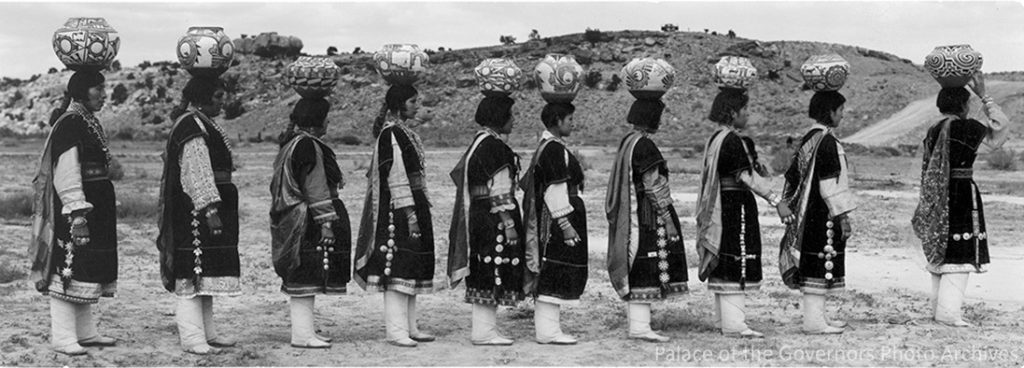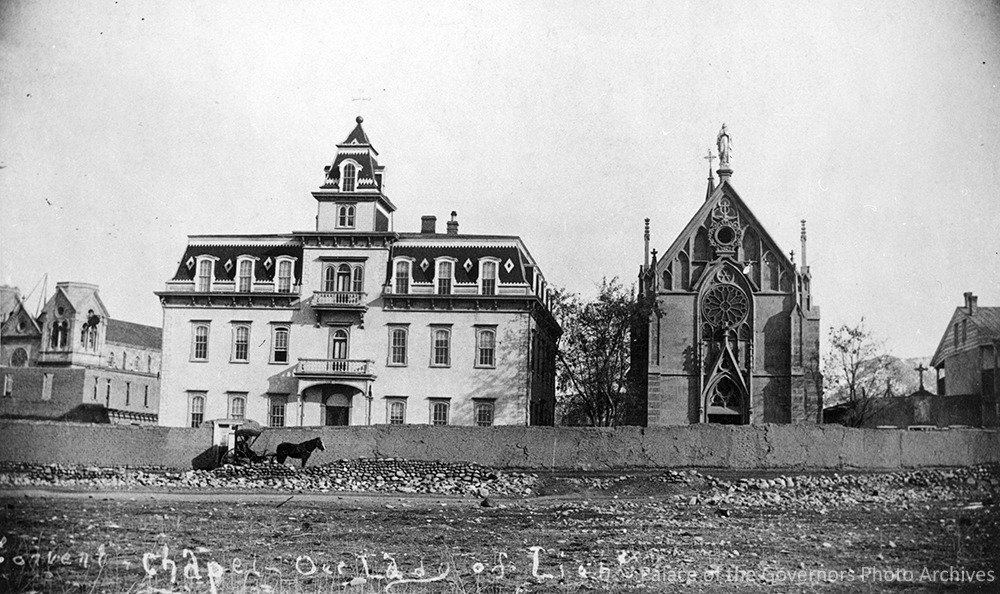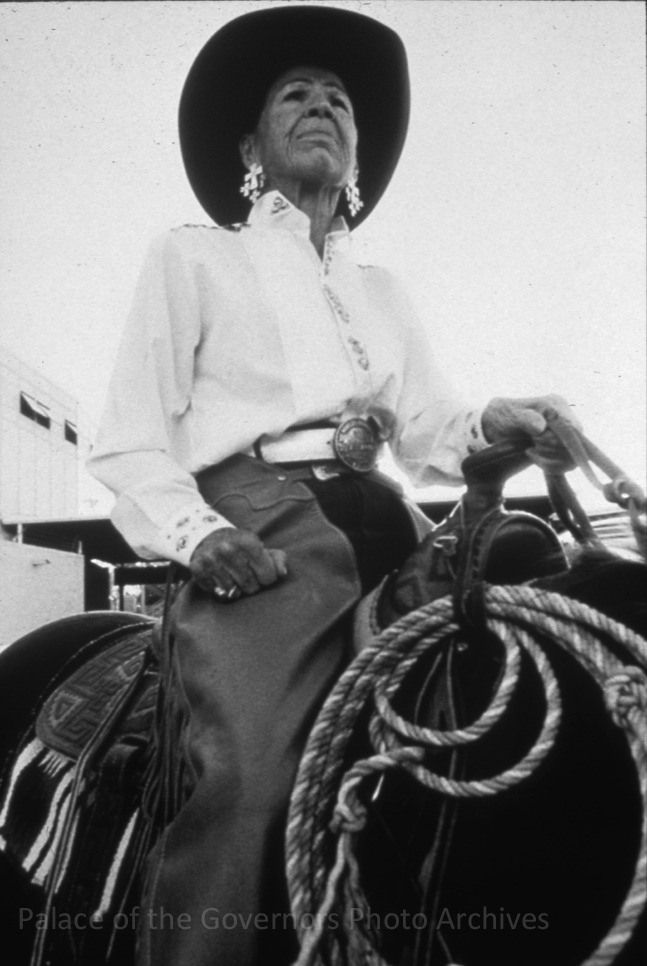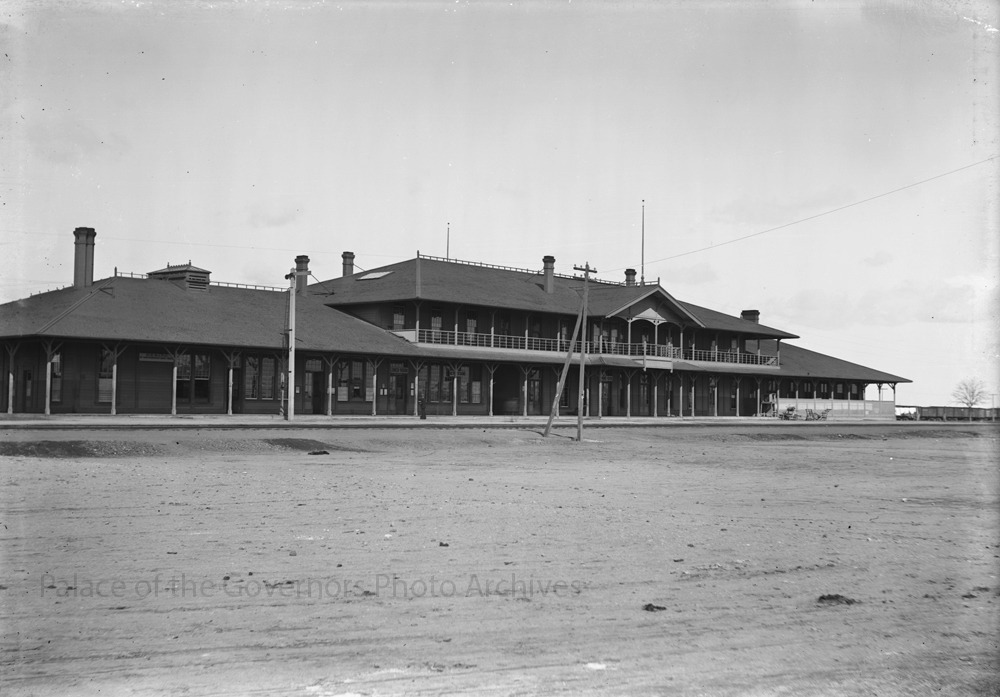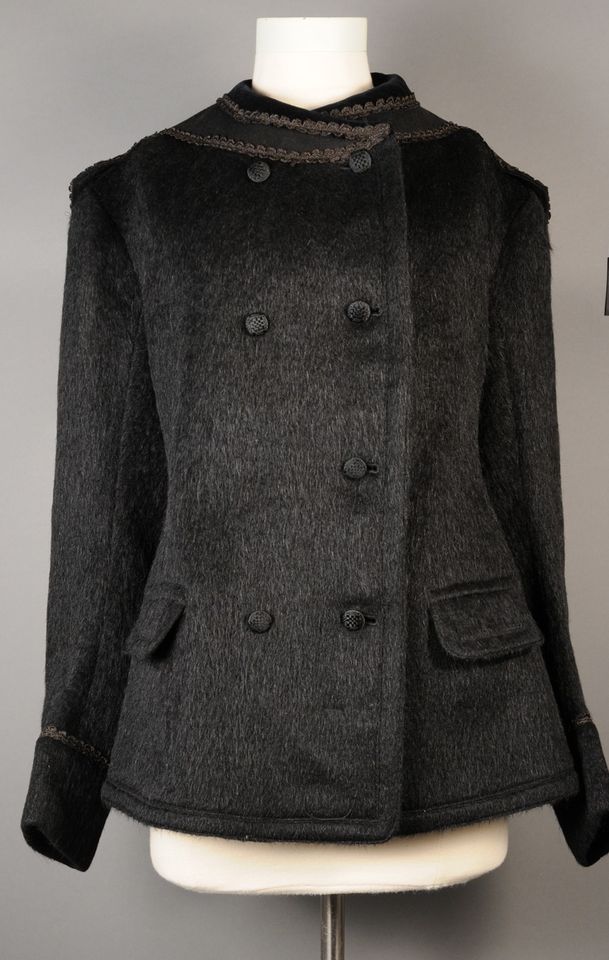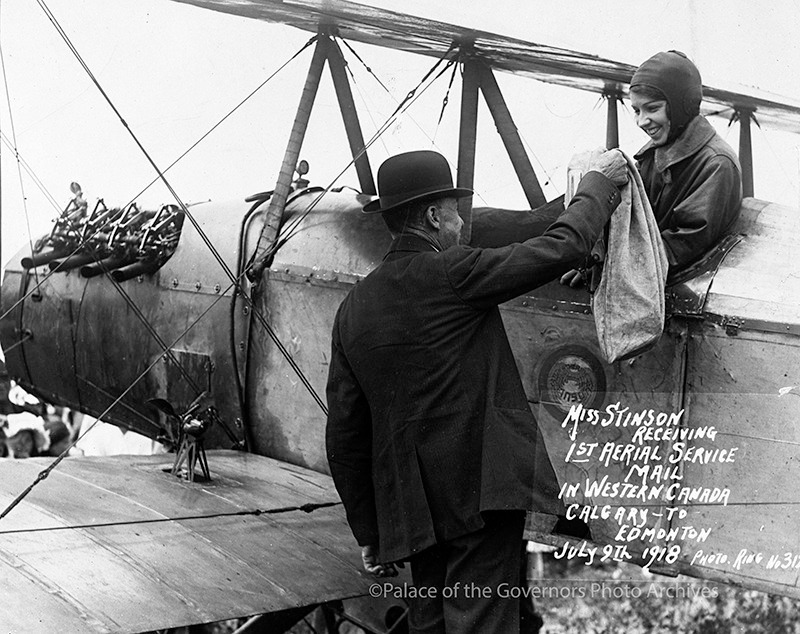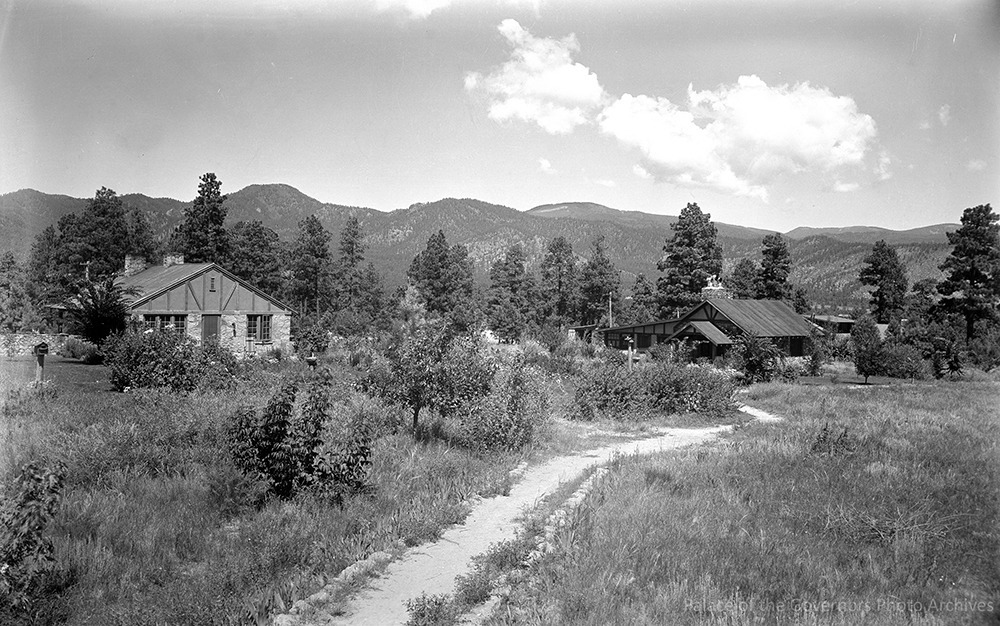
Residence of Peggy Pond Church and husband Fermor at Los Alamos Ranch School, Los Alamos, New Mexico
Photographer: T. Harmon Parkhurst
Date: 1925 – 1942?
Negative Number 001288
(SIDE 1) Marjorie Bell Chambers advised Governors and Presidents, participated in the formation of The United Nations, and headed two women’s colleges. She was president of the Los Alamos Girl Scouts, a founding member of the Historical Society and a project historian of the US Atomic Energy Commission for Los Alamos. She served on the County Council, campaigned for Congress, and traveled worldwide advocating for women’s rights. (SIDE 2) Peggy Pond Church, author of the Southwest classic The House at Otowi Bridge and daughter of Los Alamos Ranch School founder Ashley Pond, will forever be “The First Lady of New Mexican Poetry.” As she rode the Pajarito Plateau and camped beneath tall pines, she came to understand that “it is the land that wants to be said.” She captured it in her sensitive poems.
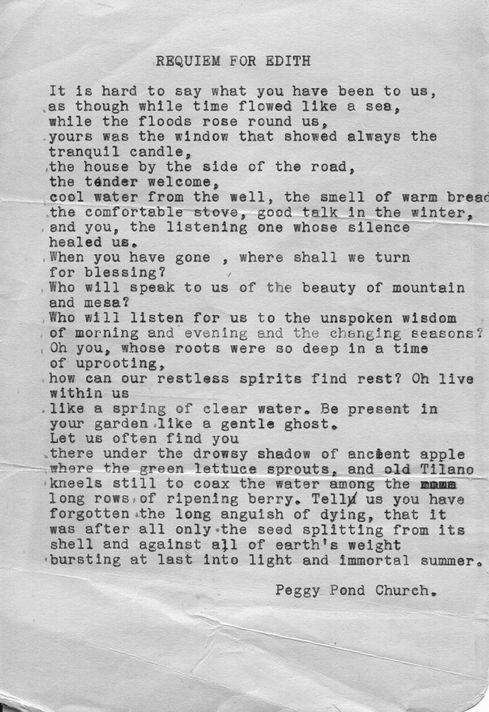
“Requiem for Edith” by Peggy Pond Church
Library Archival Collection 235-p
Roadside Marker Location: Los Alamos County, US Hwy 502, Mile Marker 0.954
You can view a county by county list of the Historic Women Mile Markers in this pdf.
You can view a map of the Historic Women Mile Markers at www.nmhistoricwomen.org
March is Women’s History Month. During this month we’ll be highlighting some of the women featured on New Mexico’s Historic Women Roadside Markers. Text provided by our colleagues at New Mexico Historic Preservation Division

